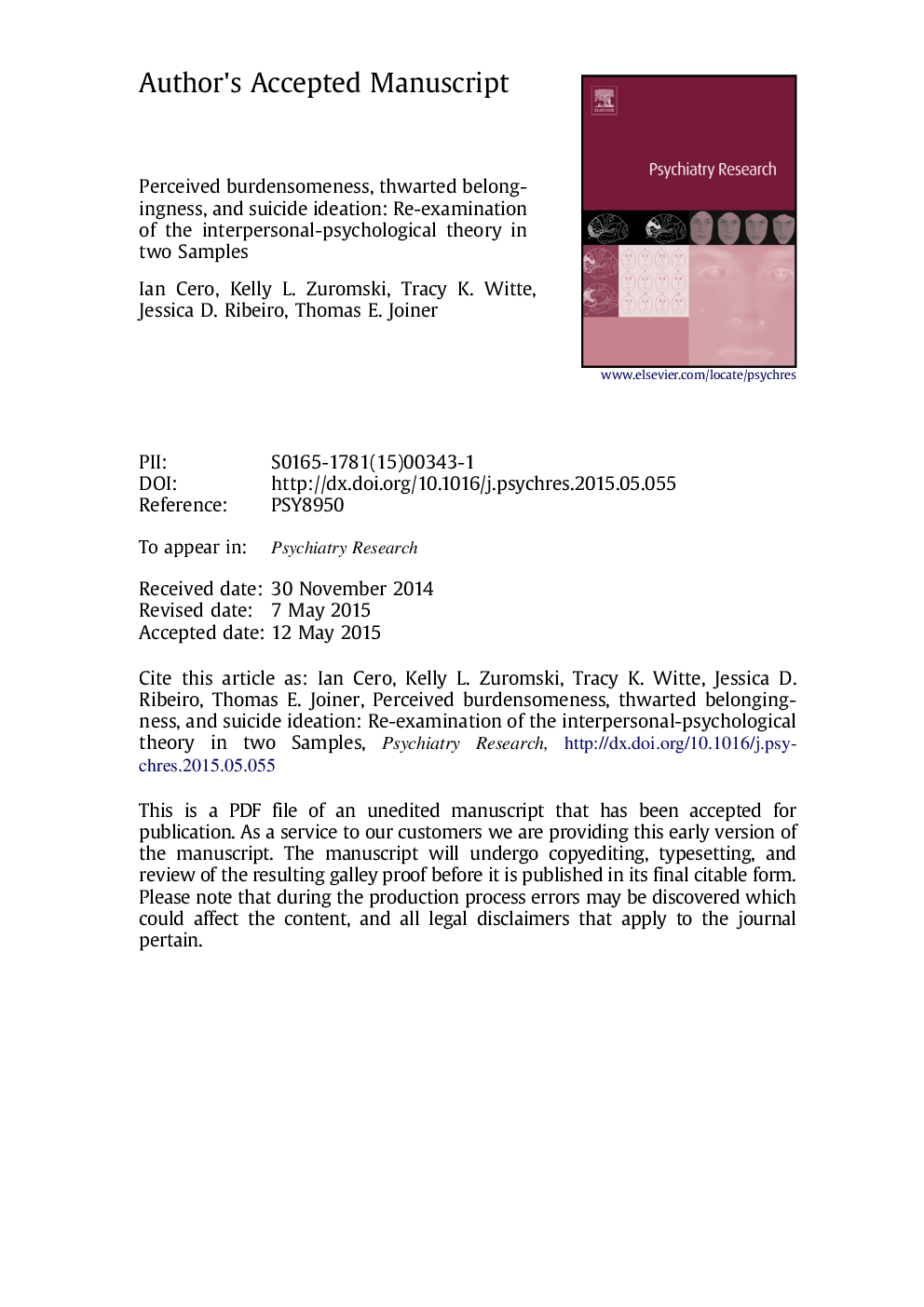| Article ID | Journal | Published Year | Pages | File Type |
|---|---|---|---|---|
| 10303707 | Psychiatry Research | 2015 | 29 Pages |
Abstract
The Interpersonal-Psychological Theory of Suicide (IPTS) proposes that suicide ideation is caused by the interaction of perceived burdensomeness and thwarted belongingness, in which each predictor amplifies the harm of the other. Though several studies support this synergy hypothesis, research has not considered potential quadratic effects of perceived burdensomeness and thwarted belongingness, which can distort the sign, size, and significance of interactions, if mistakenly neglected in a model. This investigation examined the synergy hypothesis in samples of university undergraduates and psychiatric inpatients, this time controlling for quadratic effects. Despite adequate power, results showed no interaction between perceived burdensomeness and thwarted belongingness in either sample, regardless of the presence of quadratic effects. Additionally, no quadratic effects were observed. The lower-order, linear perceived burdensomeness term was positively associated with suicide ideation in both samples, but the thwarted belongingness term was not associated with suicide ideation in either sample. The discussion considers implications of current findings for the IPTS, highlighting a need to formally test the impact of sample characteristics on the estimation of theory parameters. Recommendations for systematic evaluation of such sample and theory parameters are offered and their clinical implications are discussed.
Related Topics
Life Sciences
Neuroscience
Biological Psychiatry
Authors
Ian Cero, Kelly L. Zuromski, Tracy K. Witte, Jessica D. Ribeiro, Thomas E. Joiner,
